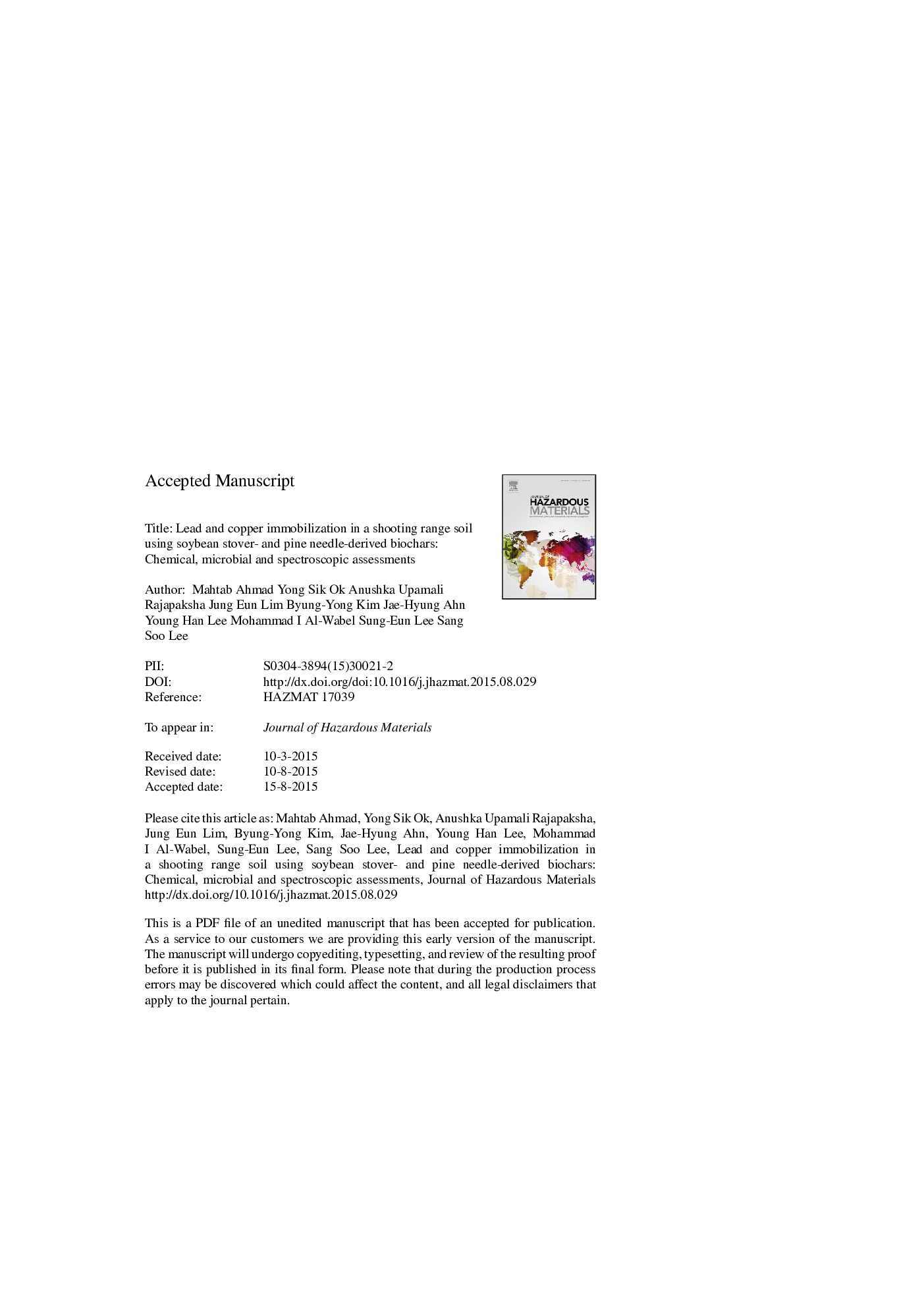| Article ID | Journal | Published Year | Pages | File Type |
|---|---|---|---|---|
| 575788 | Journal of Hazardous Materials | 2016 | 32 Pages |
Abstract
Biochar (BC) could be a potential candidate for the remediation of metal contaminated soil. Mechanistic understandings are needed for the appropriate selection of BC and investigating molecular microbial ecological interactions. The soybean stover-derived BCs were more effective in immobilizing Pb (88%) and Cu (87%) than the pine needle-derived BCs in a contaminated shooting range soil. The sequential chemical extractions indicated that BCs stimulated the geochemical transformation of metal species. Spectroscopic investigations using scanning electron microscopic elemental dot mapping and extended X-ray absorption fine structure spectroscopic measurements showed that Pb in the BCs amended soils was immobilized by the formation of stable chloropyromorphite. Soil organic C and microbial activity were also enhanced by BC. The non-labile C fraction in the soil amended with BCs produced at 700 °C was increased. Biochars showed less impact on the bacterial community than feedstock biomass as promulgated by the pyrosequencing of 16S rRNA gene. The feedstock type (namely soybean stover and pine needles) was the main factor influencing the BCs efficacy on metals' (im) mobilization and bacterial health in soils.
Related Topics
Physical Sciences and Engineering
Chemical Engineering
Chemical Health and Safety
Authors
Mahtab Ahmad, Yong Sik Ok, Anushka Upamali Rajapaksha, Jung Eun Lim, Byung-Yong Kim, Jae-Hyung Ahn, Young Han Lee, Mohammad I Al-Wabel, Sung-Eun Lee, Sang Soo Lee,
